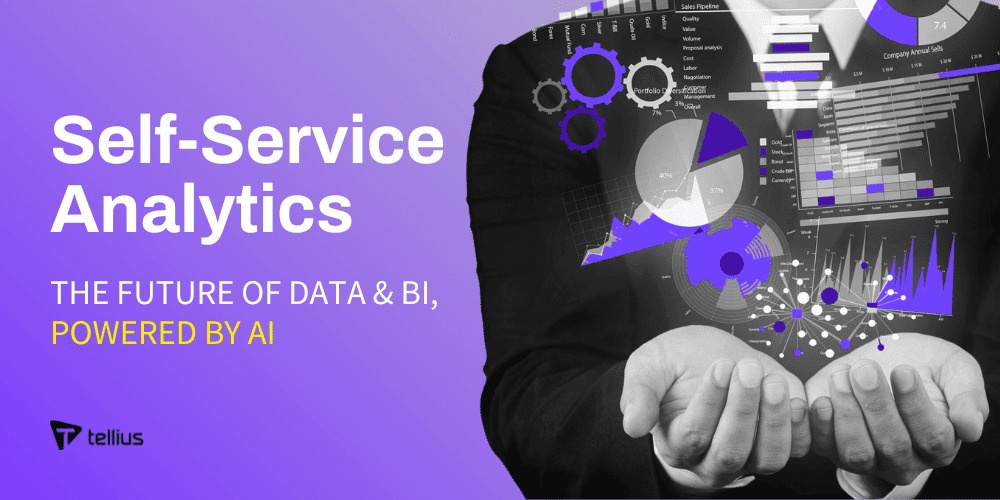Innovation is essential to staying one step ahead of the competition in the fast-paced business world of today. Organizations that can harness the power of data to drive innovation have a significant advantage. However, traditional approaches to analytics often rely on centralized teams of data experts, leading to bottlenecks, delays, and missed opportunities. Self-service analytics offers a transformative solution, empowering users across the organization to access, analyze, and derive insights from data on their terms.
Empowering Users:
At the heart of self-service analytics is the idea of empowering users to become active participants in the analytics process. Instead of relying on IT or data experts to generate reports and analyze data, self-service analytics puts the power directly into the hands of business users. With intuitive, user-friendly tools and interfaces, employees at all levels of the organization can access the data they need, when they need it, without having to wait for assistance from IT or data specialists.

Fostering a Data-Driven Culture:
Driving innovation through self-service analytics begins with fostering a data-driven culture within the organization. This involves not only providing employees with the tools they need to access and analyze data but also instilling a mindset that values data-driven decision-making. By promoting transparency, accountability, and collaboration around data, organizations can create an environment where employees feel empowered to explore new ideas, take calculated risks, and drive innovation at every level.
Providing Training and Support:
While self-service analytics tools are designed to be user-friendly, they still require some level of training and support to be used effectively. Organizations should invest in comprehensive training programs to ensure that employees have the knowledge and skills they need to make the most of these tools. This includes not only technical training on how to use the software but also education around data literacy, critical thinking, and problem-solving. Additionally, organizations should provide ongoing support and resources to help users troubleshoot issues, answer questions, and continue to develop their skills over time.
Encouraging Experimentation and Exploration:
One of the key benefits of self-service analytics is the ability to experiment and explore new ideas quickly and easily. Organizations should encourage employees to think creatively and use data to test hypotheses, validate assumptions, and uncover new insights. This might involve conducting ad-hoc analyses, building custom dashboards, or exploring data visualizations to gain a deeper understanding of business challenges and opportunities. By fostering a culture of experimentation and exploration, organizations can unlock the full potential of self-service analytics and drive innovation across the organization.
Promoting Collaboration and Knowledge Sharing:
Innovation thrives in environments where ideas can be shared freely, and collaboration is encouraged. Self-service analytics tools enable users to collaborate on data projects in real-time, regardless of their location or role within the organization. By providing a centralized platform for sharing data, insights, and best practices, organizations can break down silos, facilitate cross-functional collaboration, and accelerate innovation. Additionally, organizations should establish communities of practice or user groups where employees can connect, share ideas, and learn from one another's experiences with self-service analytics.
Measuring Success and Iterating:
Finally, driving innovation through self-service analytics requires a commitment to continuous improvement and iteration. Organizations should establish key performance indicators (KPIs) to measure the impact of self-service analytics initiatives, such as time-to-insight, user adoption rates, and business outcomes. By tracking these metrics over time, organizations can identify areas for improvement, refine their approach, and drive ongoing innovation. Additionally, organizations should solicit feedback from users regularly to understand their needs, preferences, and pain points, and incorporate this feedback into future iterations of self service analytics initiatives.
Self service analytics offers organizations a powerful tool for driving innovation and staying competitive in today's fast-paced business environment. By empowering users, fostering a data-driven culture, providing training and support, encouraging experimentation and exploration, promoting collaboration and knowledge sharing, and measuring success and iterating, organizations can unlock the full potential of self service analytics and drive innovation at every level. With the right strategy and roadmap in place, organizations can harness the power of data to fuel growth, drive efficiency, and transform their business for the better.


No comments yet